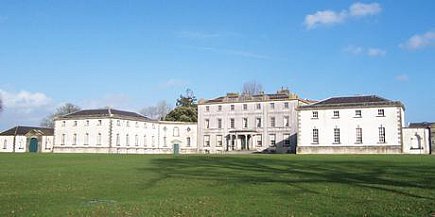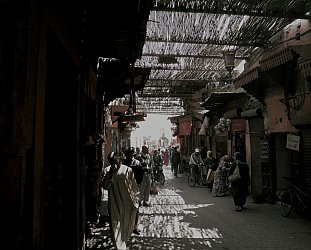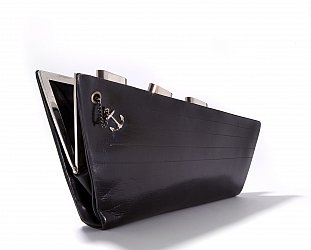Graham Reid | | 2 min read

The Celtic Tiger may be limping right now, but in the great wheel of Irish history, everything becomes relative. You need only pull into beautiful Strokestown Park in County Roscommon, two hours northeast of Galway, to see history in stark contrast, and the rise and fall of people's fates.
Strokestown House is a Palladian-style 18th-century mansion, with all its original furnishings.
It speaks of the landed gentry, and behind it is a fully restored 2.4ha walled garden which, in the right season, is a floriferous delight. There is a herbaceous border which is the longest in Britain and Ireland, and a Georgian gazebo house. The peach house and vinery date back to the late-18th century.
You can easily imagine lords and ladies resting on the lawn under a colourful cotton umbrella, or perhaps the monied classes playing croquet on a warm afternoon.
But the chief attraction at Strokestown Park isn't the sights which prompt such imaginings, it is something altogether more grim - a display that reduces you to silence.
For at picturesque Strokestown is the Famine Museum, 10 rooms in which that tragic episode in Irish life is confronted and discussed from the perspective of its victims.
Statistics can bewilder, but one stands out: in the early-19th century before the famine struck, the average adult consumed about 6.5kg of potato a day - which is not just a lot of potatoes, but shows how dependent Irish society was on the crop, especially the working people represented in this private archive of Mahon family papers and photographs.
The Mahon family built the town of Strokestown in the 18th century (their town of Gortoose on the estate had about 250 people then, only three today) and their private 404ha was used for hunting, fishing and other pleasures enjoyed by the very wealthy. Another 4046ha was rented out to tenant farmers or middlemen who would sublet small plots.
When potato blight struck in 1845, John Ross Mahon - employed by Major Denis Mahon to run the estate - proposed immediate eviction for tenants who didn't pay their rent: "Emigration on an extensive scale was the principal feature of my plan," he wrote.
Because landlords were historically considered responsible for the destitute in their area, they found it cheaper to assist their emigration. Mahon chartered three ships and paid for 1000 tenants to migrate to Canada, but half died of disease on the trip. The evictions continued, however and in 1847 Mahon was the first of seven landlords in Ireland to be assassinated in the period. The museum displays the gun he is believed to have been shot with.
More than 10,000 people were removed from this property alone. The Great Famine struck a population of around eight million in Ireland, of whom around one million died and about the same number emigrated.
In microcosm, the Famine Museum shows the social and cultural cost of the famine: the near-eradication of Ireland's poor and landless (mostly Catholic); the decline of the Irish language; the loss of cultural memory.
It is a moving experience as the story unfolds with the names of people who suffered, not those anonymous statistics that are so free of emotion.
And afterwards, those verdant gardens are a necessary reminder of the beauties of the world.





greg - Feb 24, 2012
6.5 kg a day seems like a typo to me. Per week maybe? per family/day?
SaveInteresting stuff, Graham. Your Tom Russell post brought me here.
post a comment